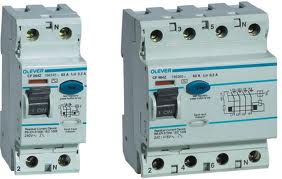Despite the dramatic improvements and upgrades in the safety of electrical installations and appliances over the last couple of decades, it is a sad fact that there are still about 100 people killed every year in the UK, as a result of electrical accidents in the home. In addition, well over a million every year suffer serious injuries. The majority of these deaths and injuries could be prevented simply by installing an RCD (residual current device), yet more than 50 per cent of UK homes do not have one.

Is It Worthwhile?
An RCD is a protective device which can detect a change in the flow of current, and immediately cut the power. For instance, if you are doing a DIY job in the house and accidentally sever a cable, the RCD will immediately interrupt the supply, greatly reducing the risk of electric shock. Similarly, if a cable burns through, the RCD will cut off the supply before there is sufficient surge to start a fire. All new builds by law have to have RCD protection – there is no legal requirement to have one in older properties, but it really does make sense.
The RCD is located in the consumer unit, the replacement for the old-style fuse box, which does not have RCD protection. The consumer unit is where the electrical wiring in your home is connected to the power supply from the National Grid. As well as the RCD, the consumer unit contains MCBs (miniature circuit breakers), which replace the old-style fuses. Many people think MCBs will protect them if something goes wrong, but although they protect the wiring from overload and short circuits, they do not provide the immediate disconnection necessary to prevent a fire or electric shock.
Protection By Law
There are some installations, such as new electric showers, which by law have to have RCD protection, so if you are installing a shower and you have an old-style fuse box, it will have to be upgraded to a consumer unit. Wiring a consumer unit is not a task you can carry out yourself – it requires a qualified electrician. The wires from different circuits have to be connected up, and then they all have to be identified and labelled. If this is not done correctly, it can be very serious.
Once the RCD is fitted, you will be much safer, but remember it has to be tested regularly. As well as using the test button, which you can do yourself, you need to get your electrician in London to check it once a year, using a calibrated tester. Your RCD will greatly increase your protection, but never forget that, with or without it, electricity must always be treated with respect.
Guest article brought to you by Phil, a keen DIY enthusiast who knows his limits!

